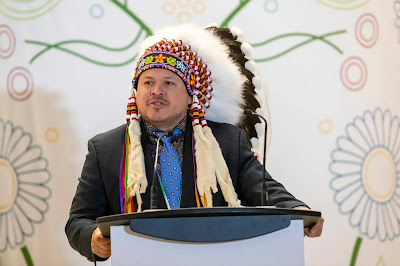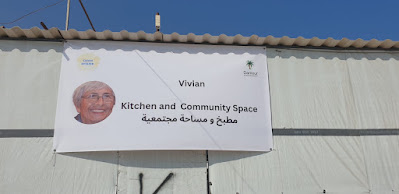When it comes to religiosity, what if we are
measuring the wrong thing? That’s the question
that came to mind when I read a report about the decline in church attendance
in Canada.
I ask the question
because attendance at religious services is one of the important ways
Statistics Canada measures religiosity — along with religious
affiliation (what faith you identify with), frequency of participation in
private religious or spiritual activities (prayer or devotions) and the
importance of religious or spiritual beliefs in how to live one’s life.
Of those four
markers, attendance at worship services is one of the more easy to measure. (And also one of the easiest to fib about since many people say what they think they should be doing, but not what they are actually doing.)
Whether people are fibbing or not, attendance at Christian worship services is clearly in decline (with some exceptions). That's what a 2021 report by the Association for Canadian Studies (ACS)
and Leger, a Canadian-owned marketing and analytics company, found.
According to the
survey, respondents who said they never attend services increased from 30 per
cent pre-pandemic to 67 per cent in 2021.
And not only that; the poll found
while 60.5 per cent of Canadians who say they strongly believe in God never or
rarely attended a religious service since the beginning of the pandemic.
Those findings echo a survey in
fall by the Evangelical Fellowship of Canada. It found that weekly religious service attendance in Canada fell from 11 per
cent pre-COVID — a figure that was stable for several years — to nine per cent
during COVID. This included online services.
It’s easy to blame the pandemic
for the decline. After 22 months of interruptions and cancellations to
in-person services, it’s easy for people to fall out of old habits or develop
new ones.
But attendance was falling even before COVID-19. According to Statistics
Canada, from 1985 to 2019 the number of people who said they attended a group
religious activity at least once a month fell by almost half, from 43 per
cent to 23 per cent. The pandemic
didn’t cause the decline, in other words — it just accelerated it.
And it’s not like not attending
services is affecting the way many Canadians view spirituality. Despite
the drop in attendance, the poll by ACS and Leger found a third of Canadians
still say religion is important in their lives. At the same time, there was
only a slight decrease in belief in God.
A survey in spring by
Angus Reid found something similar related to attendance. It prompted Angus
Reid president Shachi Kurl to say while some people suffered in terms of spiritual
health, “others came out stronger than ever before . . . people saw that God is
not in a building, God is also inside us.”
The drop in attendance makes me wonder
if the counting the number of people who attend religious services isn’t a good
way to measure religiosity in Canada any longer.
That’s the view of Brian Clarke, who
teaches at the Toronto School of Theology. “The idea that gathering for weekly
congregational worship is the chief form of religious observance is a Christian
one,” he said, referencing how Christianity has traditionally operated with
saved or unsaved, heaven or Hell and member or non-member categories.
As fewer Canadians
identify with organized religion today, Clarke is becoming interested in the
concept of “lived religion,” the study of what people do outside of sanctioned
sacred spaces and activities like worship services.
For him, it’s about looking
at what practices people engage in and asking how they appropriate them,
refashion them and cobble ideas and practices from various religious traditions
together — with or without attending formal religious services.
Lori Beaman of the
University of Ottawa feels similarly. Yet, as someone who studies religion in
Canada, she is reluctant to give up counting bodies at services. By dropping
that marker, it would be tough to compare changes in religion in Canada over
time.
“I think in a perfect world we’d
keep the old categories and introduce several more to capture the dynamic
nature of religion and nonreligion,” she said — things like including alternative
spiritual practices like doing yoga, a walk in the woods or walking a
labyrinth.
This will be hard, she acknowledged;
how do you measure the spiritual influence of a daily walk in the woods? And
yet, it’s the same with attendance. Going to services can only provide a
limited amount of information about the role it plays in people’s spiritual
lives. Just being at a service doesn’t reveal much about a person’s individual
spirituality.
This is not a new question. Back
in the late 1990s, William Closson James addressed this topic in Locations
of the Sacred: Essays on Religion, Literature and Canadian Culture. (Wilfred
Laurier University Press.)
In the book, the professor
emeritus of Queen’s University said: “To the extent that our culture is
secular, or the extent that we exist amidst a plurality of cultural forms
infused with religious material, to that extent it is impossible to generalize
about a single sacred anchoring point for Canadian culture, as if there were
only one.”
For that reason, he preferred to
speak in the plural of “locations of the sacred,” in Canadian life, something
he regarded as being “multiple, fluid and impossible to fix in any
permanent or lasting way.”
Today, as attendance at religious
services declines, maybe researchers will need to find new ways to understand
the many ways Canadians encounter the sacred. I look forward to what they
discover.
From the January, 2021 Free Press.





